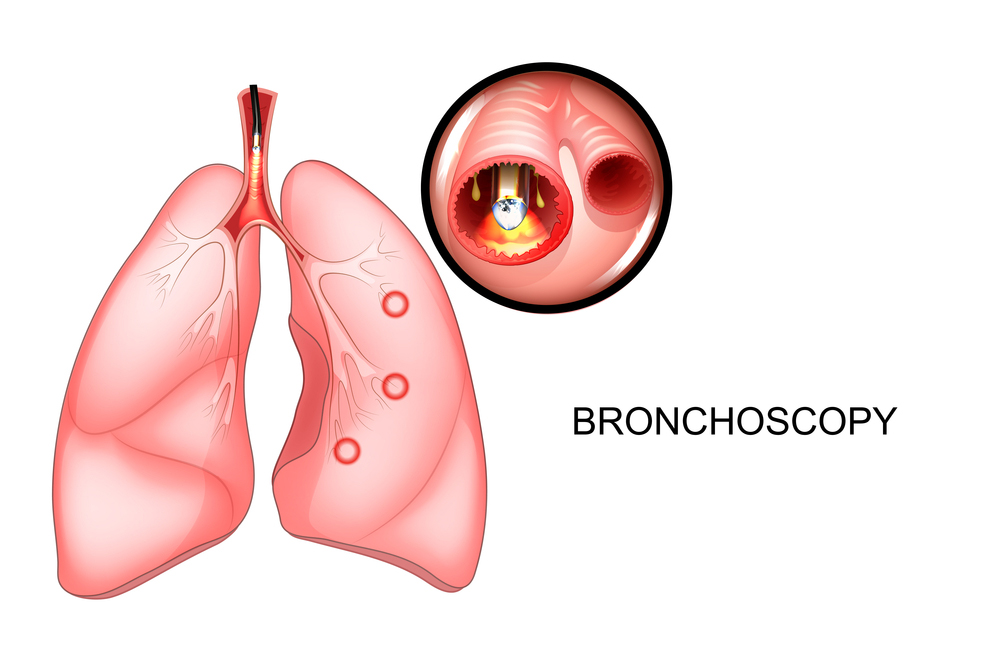
Bronchoscopy is a procedure to look directly at the airways in the lungs using a thin, lighted tube (bronchoscope). The bronchoscope is put in the nose or mouth. It is moved down the throat and windpipe (trachea), and into the airways. A healthcare provider can then see the voice box (larynx), trachea, large airways to the lungs (bronchi), and smaller branches of the bronchi (bronchioles).
There are 2 types of bronchoscope: flexible and rigid. Both types come in different widths.
A rigid bronchoscope is a straight tube. It’s only used to view the larger airways. It may be used within the bronchi to:
- Remove a large amount of secretions or blood
- Control bleeding
- Remove foreign objects
- Remove diseased tissue (lesions)
- Do procedures, such as stents and other treatments
A flexible bronchoscope is used more often. Unlike the rigid scope, it can be moved down into the smaller airways (bronchioles). The flexible bronchoscope may be used to:
- Place a breathing tube in the airway to help give oxygen
- Suction out secretions
- Take tissue samples (biopsy)
- Put medicine into the lungs
What happens during bronchoscopy?
You may have your procedure as an outpatient. This means you go home the same day. Or it may be done as part of a longer stay in the hospital. The way the procedure is done may vary. It depends on your condition and your healthcare provider's methods. In most cases, a bronchoscopy will follow this process:
- You may be asked to remove your clothes. If so, you will be given a hospital gown to wear. You may be asked to remove jewelry or other objects.
- You will sit on a procedure table with the head raised like a chair.
- An IV (intravenous) line may be put into your arm or hand.
- You may be given antibiotics before and after the procedure.
- You will be awake during the procedure. You will be given medicine to help you relax (sedative). You will also be given a liquid medicine to numb your nose and throat. For a rigid bronchoscopy, you will be given general anesthesia. This is medicine that prevents pain and lets you sleep through the procedure.
- You may be given oxygen through a nasal tube or face mask. Your heart rate, blood pressure, and breathing will be watched during the procedure.
- Numbing medicine will be sprayed into the back of your throat. This is to prevent gagging as the bronchoscope is passed down your throat. The spray may have a bitter taste to it. Once the tube passes down your throat the gagging feeling will go away.
- You won’t be able to talk or swallow saliva during the procedure. Saliva will be suctioned from your mouth as needed.
- The healthcare provider will move the bronchoscope down your throat and into the airways. You may have some mild pain. Your airway will not be blocked. You can breathe around the bronchoscope. You will be given extra oxygen if needed.
- As the bronchoscope is moved down, the lungs will be examined. Tissue samples or mucus may be taken for testing. Other procedures may be done as needed. This may include giving medicine or stopping bleeding.
- When the exam and other procedures are done, the bronchoscope will be taken out.